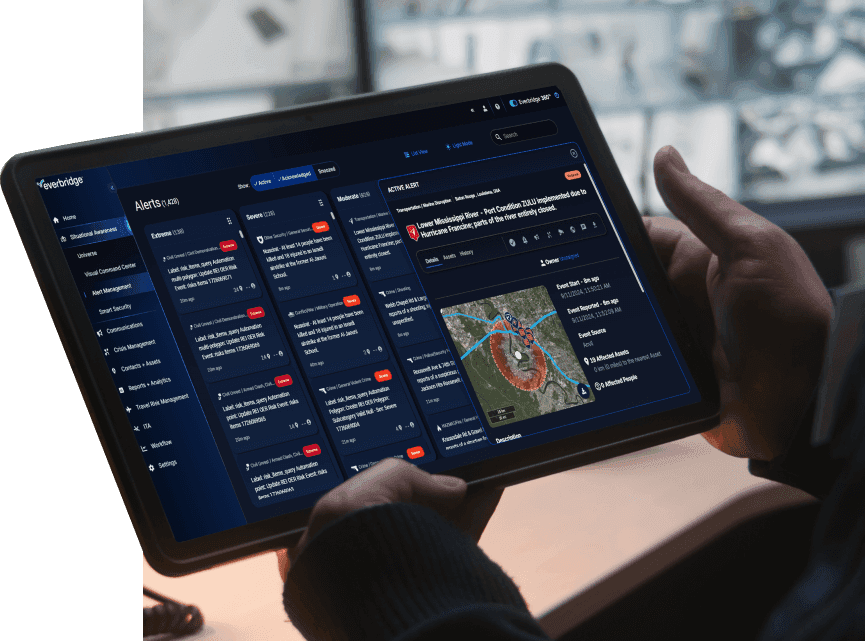Ensuring the safety and security of employees has become paramount in today’s unpredictable world. The tragic rise in active shooter incidents in every US state serves as a stark reminder of the need for preparedness. As organizations strive to create safe environments, the importance of active shooter drills in the workplace cannot be overstated. However, this sensitive topic raises debates on effectiveness, trauma, and the appropriateness of such drills. In this guide, we will explore the essential components of conducting active shooter drills while taking into account the mental well-being of employees and the unique dynamics of each workplace.
To gain insights from nearly 800 security leaders on active shooter preparedness and best practices, download the 2024 Active Assailant Preparedness Report.
Defining and understanding an active shooter threat
An active shooter event refers to a situation where an individual engages in violent acts, typically using firearms, with the intent to harm and kill as many people as possible. The FBI defines an active shooter as “an individual actively engaged in killing or attempting to kill people in a populated area,” and they go on to say that “recent active shooter incidents have underscored the need for a coordinated response by law enforcement and others to save lives.” These incidents unfold with terrifying speed, demanding swift and informed responses to minimize harm and save lives. As unsettling as it may be, acknowledging the possibility of such a scenario and preparing for it is a responsible approach in today’s world.
Should your organization run active shooter drills?
The decision to conduct active shooter drills in the workplace is not without controversy. Some argue that the likelihood of such an event unfolding is low, leading to unnecessary stress and trauma for employees. This perspective contends that the focus should shift toward preventative measures and crisis communication readiness.
While the likelihood of an actual active shooter event occurring in any given workplace may be statistically low, the potential consequences of not being prepared can be catastrophic. Therefore, organizations must carefully consider the need for drills as part of their broader safety and security strategy.
One aspect to consider is the mental stress and trauma that active shooter drills can produce for employees. These drills often simulate real-life scenarios, which can be emotionally distressing for participants. However, this stress should be weighed against the potential benefits of preparedness. To address this concern, organizations can take a trauma-informed approach to drills, ensuring that employees are provided with support and resources to cope with any emotional impact. Moreover, the decision to conduct drills should be made with sensitivity, and employees should be educated about the purpose and goals of the drills to alleviate unnecessary anxiety.
For organizations embracing a remote-first work model, the need for physical drills may appear less applicable. However, it’s essential to recognize that employees may still face potential risks while traveling or attending events, such as conferences and trade shows. In such cases, training in crisis communication and preparedness remains crucial. Equipping employees with crisis communication apps, such as the Everbridge Mass Notification platform, can provide them with a lifeline to safety information and support, even in remote or off-site situations. While the debate around active shooter drills continues, a proactive approach to safety and preparedness, tailored to the organization’s unique circumstances, remains essential.
Three-step guide to running effective active shooter drills in the workplace
If your organization chooses to run an active shooter drill, a comprehensive approach is key. Here are the three components to incorporate when running these drills.
Develop a comprehensive response plan
This plan should be tailored to your specific organization, considering all security and safety considerations. Collaborate with security professionals and law enforcement to ensure that your plan aligns with best practices and accounts for the unique dynamics of your workplace. Include detailed procedures for different scenarios, such as lockdowns, evacuations, and communication protocols.
Run a practice drill
Once your response plan is in place, it’s time to put it into action through a practice drill. These drills can range from tabletop exercises to full-scale simulations, depending on the resources and expertise available. Simulating a realistic active shooter situation is crucial for preparing employees to respond effectively and confidently during a crisis. Always start a drill by stating clearly, ‘This is a drill’ to minimize confusion or concern.
Review and debrief post-drill
After the drill concludes, it’s essential to conduct a thorough review and debriefing session. Assess what went well during the drill and identify areas that need improvement.
- Were communication channels effective?
- Were evacuation routes clearly marked and followed?
- Did employees understand their roles and responsibilities?
In addition to the operational aspects, consider the emotional well-being of participants. Active shooter drills can be emotionally stressful, so provide support for stress, anxiety, and potential trauma. Regular debriefs should be part of your drill program, allowing you to fine-tune your response plan and improve preparedness over time.
Tips to foster workplace safety
Ensuring the safety of your workplace during an active shooter event requires a multifaceted approach. Here are some essential tips to keep your workplace safer in the face of this critical threat:
Implement a comprehensive workplace safety program
The foundation of a secure workplace begins with a robust safety program. Such a program should encompass various safety measures, including active shooter preparedness. Regularly review and update your safety program to align with best practices and the evolving threat landscape.
Educate all employees on “Run, Hide, Fight”
Every employee should be familiar with the “run, hide, fight” concept—an essential mental framework to navigate an active shooter situation.
- “Run” encourages individuals to escape the danger zone if it’s safe to do so.
- “Hide” means finding a secure hiding place and silencing devices.
- “Fight” should be a last resort, when there’s no other option, and it involves taking actions to incapacitate the shooter.
Leverage emergency communication tools
Emergency communication tools play a pivotal role in keeping employees informed and safe during an active shooter event. Public warning systems can alert individuals in and around the workplace to potential threats, while mass notification platforms enable rapid dissemination of critical information. Having these tools in place ensures that communication remains uninterrupted, facilitating swift responses to evolving situations.
Demonstrate your commitment to resilience
Everbridge offers a Best in ResilienceTM certification program that can benefit your organization by ensuring employees, assets, resources, and communities are better protected from any type of critical event such as active shooter situations, inclement weather, cyberattacks, and more. Becoming certified highlights an organization’s dedication to building resilience in the face of disaster and can help employees feel confident in their safety and security while at work.
By incorporating these tips into your workplace safety strategy, you create an environment where preparedness and vigilance are paramount. While it’s impossible to predict when an active assailant event may occur, proactive measures empower employees to respond effectively and maximize their safety in a critical situation. If you’re ready to get started on making your workplace safer, here are eight actions you can take today.
Navigating a complex landscape with preparedness
In an era where workplace violence poses a real threat, organizations must navigate a complex landscape with preparedness and empathy. The decision to conduct active shooter drills should be well-informed, accounting for the psychological well-being of employees while striving to ensure their safety. While debates exist, the urgency of proactive measures cannot be understated. A comprehensive approach, ranging from meticulous planning to employee support, is key. By fostering a culture of preparedness and vigilance, organizations can create safer work environments that protect employees and empower them to respond effectively in the face of adversity.
To learn more, download the 2024 Active Assailant Preparedness Report.

